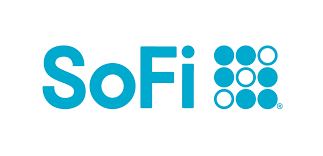If you want to optimize your finances, a checking account buffer may feel unnecessary, or even like a missed opportunity if you aren’t earning interest on that account.
But if you have money going from that account to critical bills like your utility and rent payments, you need to make sure that there’s always enough money in there to cover those costs. Otherwise, you’ll run into issues like declined payments and maybe even hits to your credit. (And bad credit can cost you thousands per year, depending on your circumstances.)
Here are the three steps you need to figure out exactly how much money you should keep in your checking account.
1. Consider your monthly auto-payments
We all tend to have at least a few payments that are automatically deducted from our checking accounts. Whether that’s for savings, bills, or something else, you’ll want to make sure that you can cover all of those expenses to avoid overdraft fees.
Our Picks for the Best High-Yield Savings Accounts of 2024
|
SoFi Checking and Savings 
APY up to 4.60%
|
APY up to 4.60%
|
Min. to earn $0 |
|
Citizens Access® Savings 
|
Min. to earn $0.01 |
|
|
American Express® High Yield Savings 
APY 4.25%
|
APY 4.25%
|
Min. to earn $1 |
So the first step is to list each of these payment dates, as well as the amounts, if known. For variable expenses, like your electricity bill, you might want to take a look at your previous three to six months’ worth of bills to get an average.
2. Look at the stability and timing of your paychecks
For those who get a predictable monthly or bi-weekly paycheck, this probably isn’t going to be that much of a concern. But for those who may not be salaried employees — for example, my fellow freelancers — this is critical.
Either way, though, you again need to know the dates and amounts that you can reasonably expect to be deposited into your checking account each month. That way, you can figure out exactly what your balance should be at various points in the month. If that amount is always positive, you can move on to the next step. If not, note down how much your balance goes in the red and then go to the next step.
3. Consider your emergency savings
Once you know when money is coming in and out of your checking account, you can figure out exactly how much you need to keep in that account to avoid mishaps. The best way to do this is to consider how long it would take you to get money from your emergency savings account into your checking account, which may require a small test run to figure out.
If it takes three to five days to transfer money across those accounts, you’ll want to look at the highest auto-paid bill on your list, as well as any other deductions that occur during the three to five days before or after that amount comes out of your account.
Let’s say your $2,000 rent payment comes out of your checking account on the 1st of the month and that’s your largest monthly expense. If you also have a $500 loan payment that comes out of that account on the 3rd, and a $200 utility bill on the 28th, you should keep at least $2,700 in your checking account. But if you have a point in the month where your balance is negative because of the timing of your bills vs. paychecks, you need to add that amount to the buffer, too. So, even if there’s an issue with your income at the worst possible time, you’ll be covered.
Of course, this all assumes that you have an emergency fund to fall back on for larger expenses. If you don’t, saving one should be your top priority alongside creating this checking account buffer. That way, you’ll have the peace of mind that comes from knowing you’re prepared for the future.
These savings accounts are FDIC insured and could earn you 11x your bank
Many people are missing out on guaranteed returns as their money languishes in a big bank savings account earning next to no interest. Our picks of the best online savings accounts could earn you 11x the national average savings account rate. Click here to uncover the best-in-class accounts that landed a spot on our short list of the best savings accounts for 2024.
